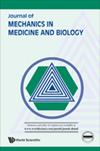基于数据挖掘和孪生学习网络的心理健康识别研究
IF 0.6
4区 医学
Q4 BIOPHYSICS
引用次数: 0
摘要
针对心理健康数据的识别问题,提出了一种基于数据挖掘和孪生网络深度学习的识别方法。首先,使用K-Means聚类和改进的Apriori数据挖掘方法对调查数据集进行预处理。改进了Apriori数据挖掘方法,通过引入累积计数和地址映射表,显著提高了Apriori算法的剪枝效率。随后,在孪生网络的深度学习框架下,将参考数据集和聚类分析后的调查数据集纳入上分支网络,将数据挖掘纳入下分支网络。上层分支网络进一步整合了渠道自注意机制,下层分支网络进一步整合了空间自注意机制。基于各类心理健康数据和参考数据集,进行识别实验。实验结果表明,该方法在Precision、Recall、F1和AUC四个评价指标上均优于决策树(DT)、支持向量机(SVM)、卷积神经网络(CNN)和RNN方法。此外,该方法在数据挖掘中具有较高的修剪效率和判别心理健康的准确性。本文章由计算机程序翻译,如有差异,请以英文原文为准。
Studies on the mental health recognition based on data mining and twin learning network
This study was envisaged to develop a recognition method based on the data mining and twin network deep learning, in view of the recognition problems of the mental health data. Initially, the survey dataset was preprocessed using K-Means clustering and improved Apriori data mining methods. The Apriori data mining method was improvised, which significantly improved the pruning efficiency of the Apriori algorithm by introducing cumulative counting and address mapping tables. Subsequently, under the deep learning framework of the twin network, the reference dataset was included in the upper branch network and the survey dataset after clustering analysis, and data mining was included in the lower branch network. The upper branch network further integrated the channel self-attention mechanism, while the lower branch network further integrated the spatial self-attention mechanism. Based on various types of mental health data and reference datasets, identification experiments were conducted. The experimental results showed that the proposed method outperformed the Decision Tree (DT), Support Vector Machine (SVM), Convolutional Neural Network (CNN), and RNN methods using the four evaluation indicators of Precision, Recall, F1, and AUC. Furthermore, the developed method has higher pruning efficiency in data mining and higher accuracy in discriminating mental health.
求助全文
通过发布文献求助,成功后即可免费获取论文全文。
去求助
来源期刊

Journal of Mechanics in Medicine and Biology
工程技术-工程:生物医学
CiteScore
1.20
自引率
12.50%
发文量
144
审稿时长
2.3 months
期刊介绍:
This journal has as its objective the publication and dissemination of original research (even for "revolutionary concepts that contrast with existing theories" & "hypothesis") in all fields of engineering-mechanics that includes mechanisms, processes, bio-sensors and bio-devices in medicine, biology and healthcare. The journal publishes original papers in English which contribute to an understanding of biomedical engineering and science at a nano- to macro-scale or an improvement of the methods and techniques of medical, biological and clinical treatment by the application of advanced high technology.
Journal''s Research Scopes/Topics Covered (but not limited to):
Artificial Organs, Biomechanics of Organs.
Biofluid Mechanics, Biorheology, Blood Flow Measurement Techniques, Microcirculation, Hemodynamics.
Bioheat Transfer and Mass Transport, Nano Heat Transfer.
Biomaterials.
Biomechanics & Modeling of Cell and Molecular.
Biomedical Instrumentation and BioSensors that implicate ''human mechanics'' in details.
Biomedical Signal Processing Techniques that implicate ''human mechanics'' in details.
Bio-Microelectromechanical Systems, Microfluidics.
Bio-Nanotechnology and Clinical Application.
Bird and Insect Aerodynamics.
Cardiovascular/Cardiac mechanics.
Cardiovascular Systems Physiology/Engineering.
Cellular and Tissue Mechanics/Engineering.
Computational Biomechanics/Physiological Modelling, Systems Physiology.
Clinical Biomechanics.
Hearing Mechanics.
Human Movement and Animal Locomotion.
Implant Design and Mechanics.
Mathematical modeling.
Mechanobiology of Diseases.
Mechanics of Medical Robotics.
Muscle/Neuromuscular/Musculoskeletal Mechanics and Engineering.
Neural- & Neuro-Behavioral Engineering.
Orthopedic Biomechanics.
Reproductive and Urogynecological Mechanics.
Respiratory System Engineering...
 求助内容:
求助内容: 应助结果提醒方式:
应助结果提醒方式:


